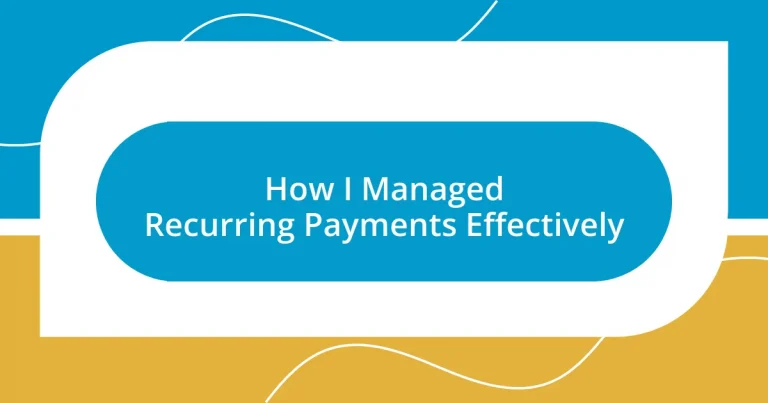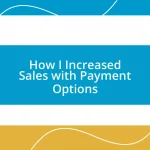Key takeaways:
- Understanding recurring payments involves recognizing terms, avoiding hidden fees, and using technology for better management.
- Identifying payment needs through evaluation and reflection can prevent unnecessary expenses and stress.
- Effective subscription management includes communication with customers, offering flexibility, and troubleshooting issues proactively.
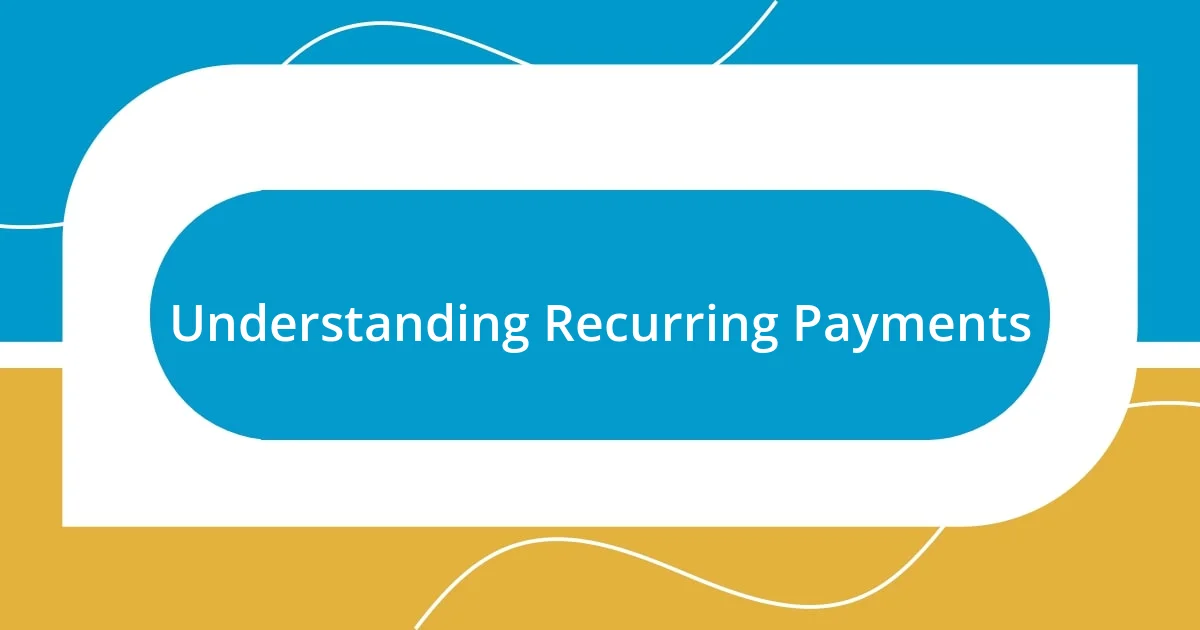
Understanding Recurring Payments
Recurring payments are transactions that automatically deduct a set amount from a customer’s account on a predetermined schedule. I remember feeling a mix of relief and anxiety when I first set up my subscription for a streaming service. It was convenient—no more remembering to pay each month—but the thought of forgetting about it and continuing to pay for something I wasn’t using often made me uneasy.
As I delved deeper into managing these payments, I realized the importance of understanding their terms. Did you know that some subscriptions may have hidden fees or renewal clauses? I was caught off guard once when a fitness app automatically renewed at a higher price without any warning. These surprises can create emotional turmoil, especially if you’re on a tight budget.
Embracing the technology that supports recurring payments can significantly enhance the experience. There’s something empowering about using reminders and tracking tools to stay ahead of my commitments. Have you ever thought about how much easier it can be when you take proactive steps? This not only helps avoid unwanted charges but also promotes a clearer financial picture.
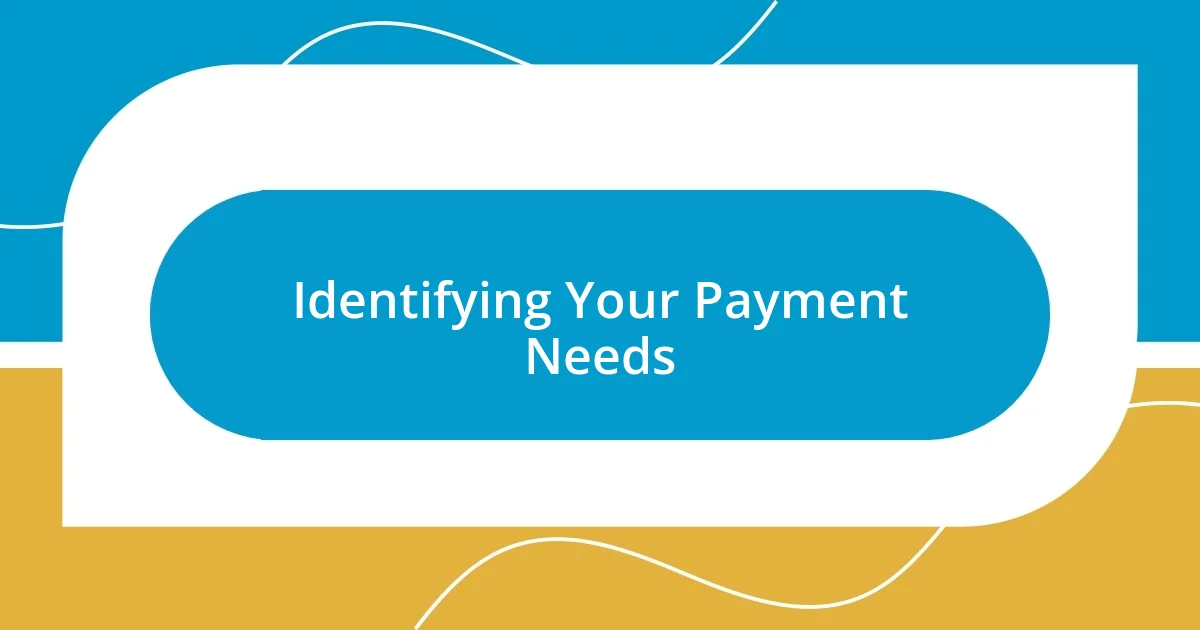
Identifying Your Payment Needs
When looking to identify your payment needs, it’s essential to take a step back and assess what services or subscriptions truly add value to your life. Personally, I found myself paying for a few services I rarely used, and that realization was a wake-up call. I encourage you to reflect on whether your current payments align with your lifestyle and goals. Think about not just the cost but the benefits you derive from each subscription.
Here’s a quick checklist that might help with this process:
- Evaluate Usage: Do you use the service regularly?
- Assess Value: Is the subscription worth the price based on the benefits?
- Consider Alternatives: Are there cheaper or free options that meet similar needs?
- Monitor Changes: Have your needs shifted recently, such as a new job or change in hobbies?
- Predict Future Needs: Will you need this service long-term, or is it timely?
By taking the time to analyze your payment needs comprehensively, you can avoid unnecessary expenses and focus on what truly supports you. This has not only saved me money but has also alleviated much of the stress I used to associate with recurring payments.
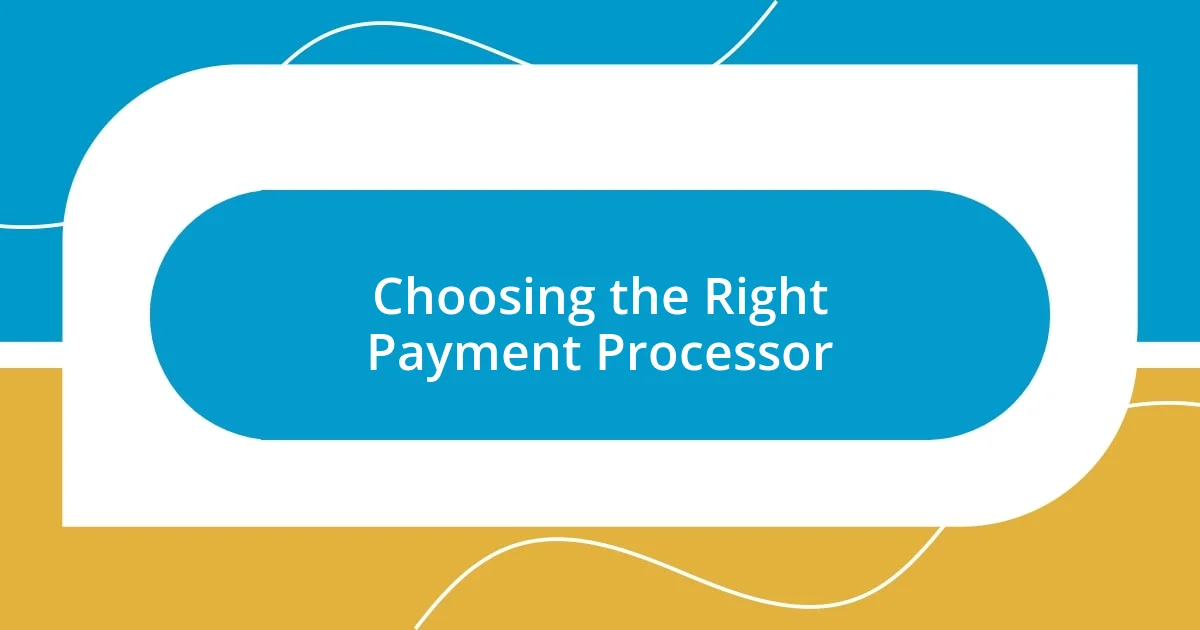
Choosing the Right Payment Processor
When I started my quest to manage recurring payments effectively, choosing a payment processor felt daunting. It’s crucial to align the processor with my business needs. I remember a time when I picked a service based solely on popularity—only to discover its fees were significantly eating into my profits. I learned that understanding transaction fees, customer support quality, and compatibility with my existing tools can make a world of difference.
Comparing payment processors is indispensable. I once made a hasty decision without looking closely at the features offered, which led to a clunky integration process that wasted valuable time. It’s vital to assess aspects like user experience, payment options, and reporting features. A well-chosen processor should integrate seamlessly into your workflow, enhancing efficiency rather than complicating it.
Here’s a concise comparison table of popular payment processors to help guide your decision:
| Payment Processor | Transaction Fees | Monthly Fees | Customer Support |
|---|---|---|---|
| Processor A | 2.9% + $0.30 | $0 | Email/Phone |
| Processor B | 2.7% + $0.25 | $10 | 24/7 Support |
| Processor C | 3.0% + $0.15 | $20 | Live Chat |
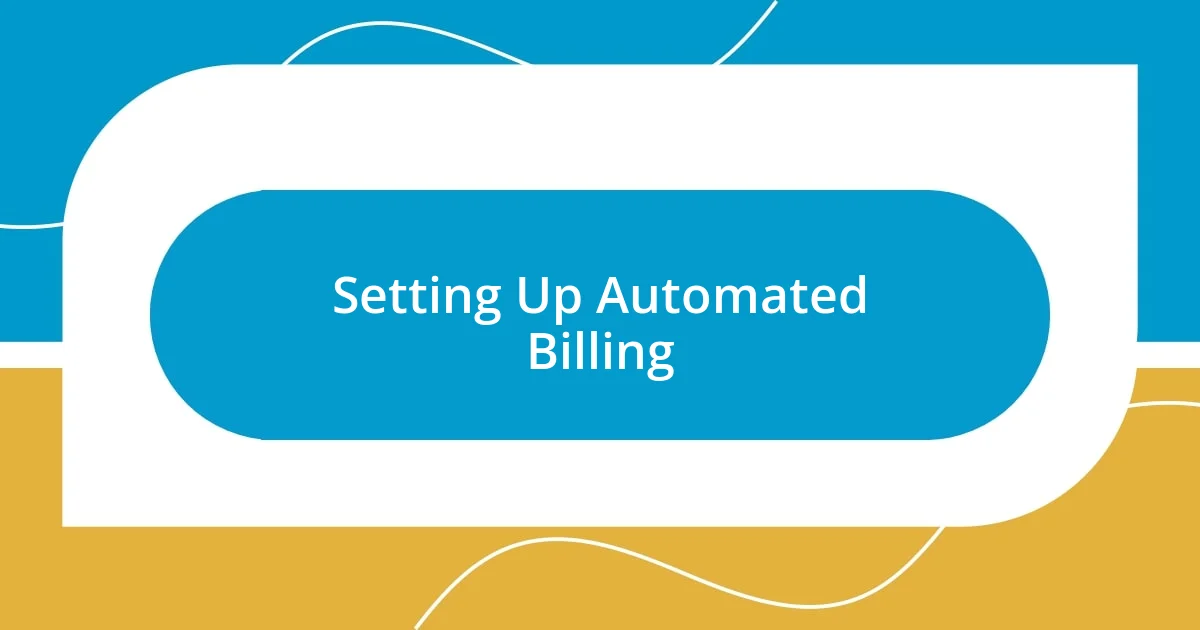
Setting Up Automated Billing
Setting up automated billing has been a game changer for me. Initially, I struggled to keep track of due dates, leading to late fees that added unnecessary stress. I remember the relief I felt when I connected my bank account to an automated billing system; it felt like a weight was lifted off my shoulders. Isn’t it comforting to know your bills are paid without you having to think about them constantly?
When you’re choosing to automate your billing, ensuring all your payment information is accurate is crucial. I once encountered a frustrating situation where a missed payment was caused by an expired credit card on file. It made me rethink how I manage my accounts. I now schedule regular reminders to update my payment methods, which prevents disruptions and maintains my peace of mind.
Integrating automated billing also means you should regularly review your subscriptions. I take the time every few months to check if I’m utilizing everything I’ve signed up for. This has helped me catch redundancies, ultimately streamlining my financial commitments in a way that resonates with my goals. How often do you audit your services? A little time invested in this practice can yield significant results in peace of mind and savings.
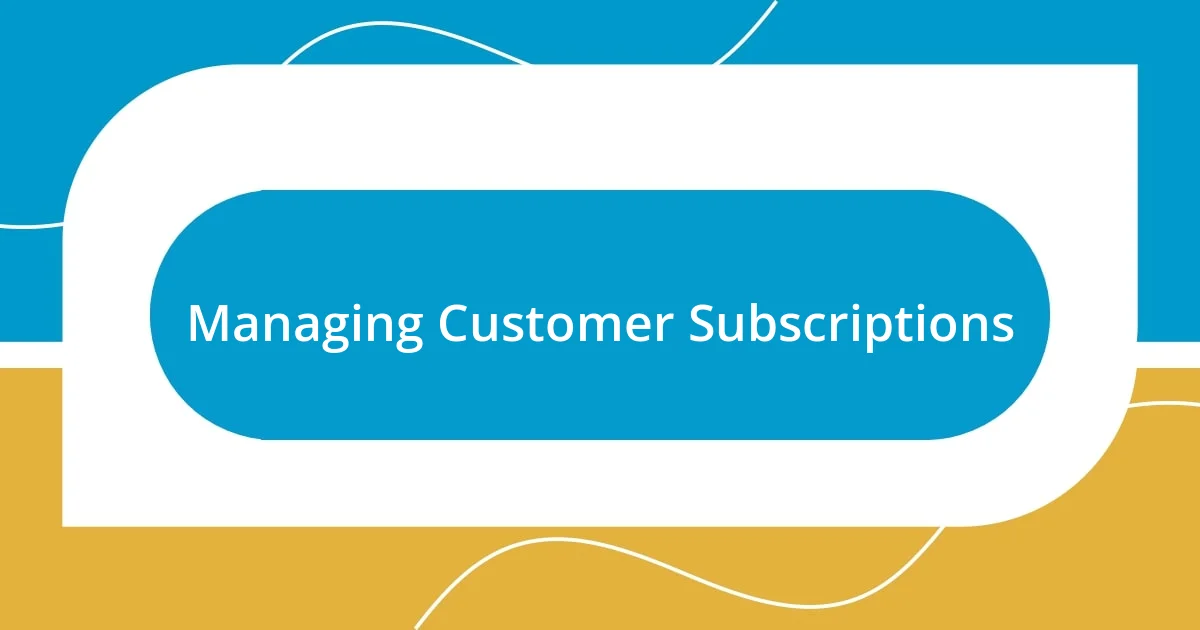
Managing Customer Subscriptions
Managing subscriptions effectively can feel like navigating a maze, especially when you’re dealing with numerous customers with different preferences. I can’t tell you how many times I’ve had to manually track subscriptions, only to end up confused by overlapping billing cycles. I finally embraced a subscription management platform that allowed me to monitor everything from renewals to customer engagement in one central place. It felt like turning on a light in a dark room!
One surprising lesson I learned involved communication with my customers. Early on, I often took their feedback for granted, assuming they were satisfied as long as payments were processed. However, a simple email update about upcoming changes unleashed a flood of insights and allowed customers to express their needs. This not only strengthened relationships but also reduced churn, proving that staying attuned to customer sentiments isn’t just good practice—it’s essential for retention. Have you ever considered how a quick note or survey can reshape your subscription game?
Additionally, I’ve discovered the importance of providing flexible options to accommodate varying customer needs. I once had a client who valued the freedom to pause their subscription instead of canceling altogether. After introducing the option to temporarily freeze their account, I found that not only did it maintain the relationship, but it also reinstated many customers when they were ready to return. Isn’t it interesting how a small tweak in policy can lead to loyalty and boost your bottom line?
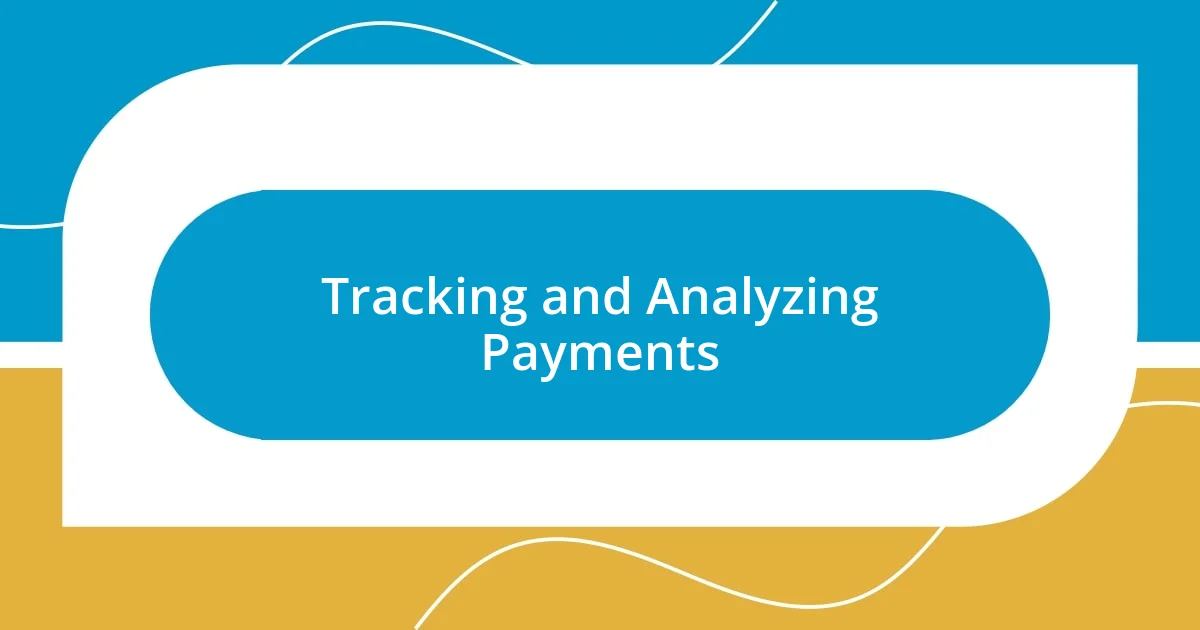
Tracking and Analyzing Payments
Tracking recurring payments can feel overwhelming, but I’ve found that organizing this information can significantly ease the burden. I use a spreadsheet to keep track of all my payment dates, amounts, and the services tied to each payment. Just last month, I identified a payment I had overlooked that could have led to a lapse in service. It’s astonishing how a simple glance at an organized list can save you from surprise fees!
When analyzing payment data, I’ve learned to dig deeper than just dates and amounts. I like to categorize my expenses to see where most of my money flows each month. In doing this, I discovered that a large portion went towards subscriptions I rarely used. This realization sparked a project of canceling unnecessary services, which lightened my financial load considerably. Have you taken the time to reflect on your payment trends? It can be a revealing exercise!
Additionally, I believe that using financial apps has transformed how I track my payments. These tools not only alert me about upcoming charges but also provide insights into my spending habits. I vividly recall the moment I realized I was automatically subscribed to a service I no longer needed; it was eye-opening! Seeing that information laid out graphically motivated me to take action immediately. How have you leveraged technology to better understand your recurring payments? The right tools can make all the difference in achieving financial clarity.
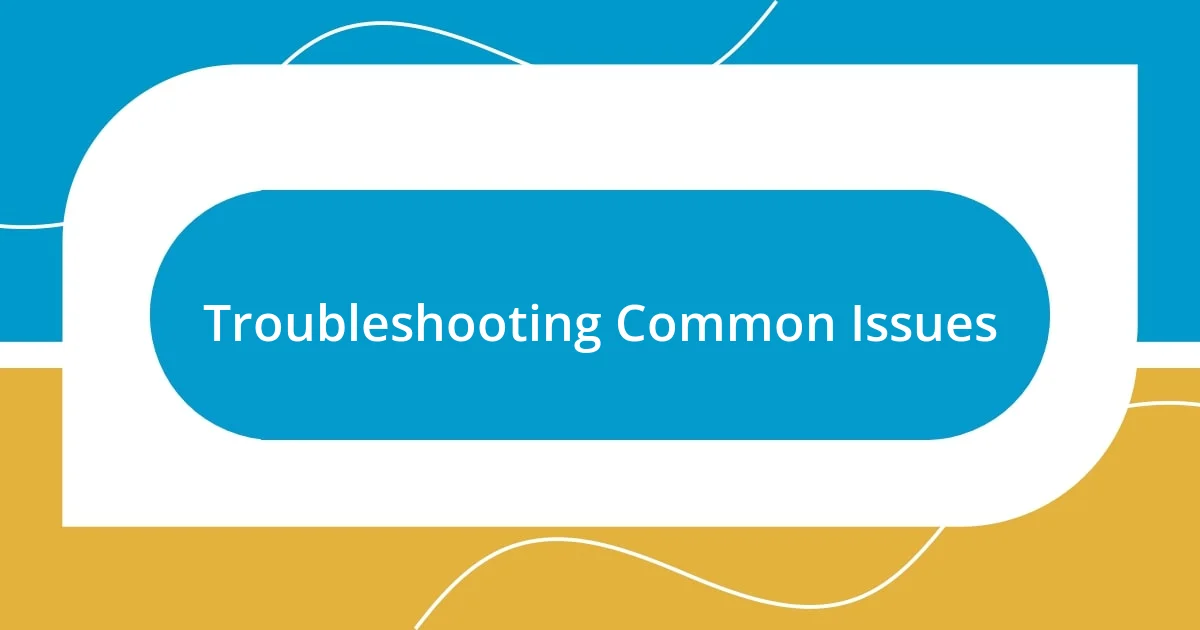
Troubleshooting Common Issues
Sometimes, despite our best efforts, recurring payments can go awry, and it’s essential to have strategies ready to troubleshoot these hiccups. I remember a time when a payment didn’t process, prompting an anxious call from a customer who was concerned about their subscription. It turned out that the account had insufficient funds, but this experience taught me the importance of setting up automated reminders for both myself and my customers. Have you considered how proactive communication can alleviate stress for everyone involved?
Another common issue I’ve faced revolves around expired payment methods. Once, a customer reached out after their subscription suddenly lapsed, leaving them frustrated. This incident made me realize the need for a gentle nudge—an automated email reminding customers to update their payment information as expiration dates approach. It’s amazing how a little forethought can save both customer relationships and your own peace of mind, wouldn’t you agree?
Lastly, dealing with charge disputes can be tricky. I recall a situation where a customer disputed a charge, believing it was an error. This experience taught me the importance of clear records and prompt resolutions. Now, I make a point to keep detailed logs of communication and transactions, so I can quickly address any discrepancies. Keeping an open line of communication is key; how do you ensure your customers feel heard and valued during these situations?












